Comprehensive Garden Maintenance in Yeading: Keep Your Garden Flourishing Year-Round
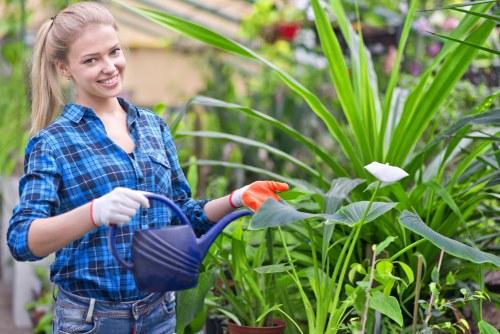
Maintaining a beautiful garden in Yeading requires dedication, knowledge, and the right techniques. Whether you're a seasoned gardener or a beginner, understanding the essential aspects of garden maintenance can transform your outdoor space into a vibrant and thriving oasis.
Yeading, with its unique climate and soil conditions, presents specific challenges and opportunities for gardeners. From selecting the right plants to regular upkeep, each step plays a crucial role in ensuring your garden remains healthy and attractive throughout the seasons.
In this guide, we will explore the key elements of garden maintenance in Yeading, providing you with actionable tips and expert insights to help your garden flourish.
Understanding Yeading's Climate and Soil
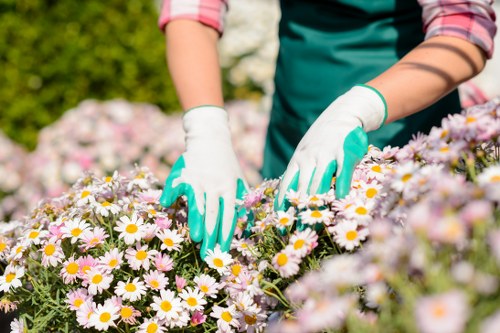
Before diving into garden maintenance, it's essential to comprehend Yeading's climate. Yeading experiences a temperate climate with mild winters and warm summers, making it suitable for a wide variety of plants.
The soil in Yeading tends to be slightly acidic, which influences plant selection and soil treatment strategies. Conducting a soil test can help determine the pH levels and nutrient content, allowing you to amend the soil appropriately for optimal plant growth.
By understanding the local climate and soil conditions, you can make informed decisions about plant selection, irrigation, and fertilization, ensuring your garden thrives in Yeading's environment.
Choosing the Right Plants for Yeading
Selecting plants that are well-suited to Yeading's climate and soil is the foundation of effective garden maintenance. Consider native species that are adapted to the local conditions, as they typically require less maintenance and are more resistant to pests and diseases.
Popular choices for Yeading gardens include lavender, rosemary, and various ornamental grasses. Additionally, incorporating a mix of perennials and annuals can provide year-round color and interest.
When choosing plants, consider their growth habits, sunlight requirements, and water needs to ensure they complement your garden's layout and your maintenance capabilities.
Plant Selection Tips
- Opt for drought-resistant plants to reduce water usage.
- Choose a variety of flowering plants for continuous bloom cycles.
- Incorporate evergreen shrubs for year-round structure.
Regular Maintenance Tasks

Consistent maintenance is key to a healthy garden. Regular tasks help prevent issues such as pest infestations, plant diseases, and overgrowth.
Key maintenance activities include watering, weeding, pruning, and fertilizing. Each of these tasks plays a vital role in the overall health and appearance of your garden.
Establishing a maintenance schedule can help you stay organized and ensure that each aspect of your garden receives the attention it needs.
Watering Your Garden Effectively
Proper watering is essential for plant health, especially during Yeading's warmer months. It's important to water deeply and less frequently to encourage deep root growth.
Consider installing a drip irrigation system to deliver water directly to the plant roots, minimizing evaporation and water waste. Mulching around plants can also help retain soil moisture and reduce the frequency of watering.
Avoid overwatering, which can lead to root rot and other fungal diseases. Monitoring soil moisture levels can help you determine the optimal watering schedule for your garden.
Watering Best Practices
- Water early in the morning to reduce evaporation.
- Use mulch to maintain soil moisture.
- Check soil moisture before watering.
Pest and Disease Management
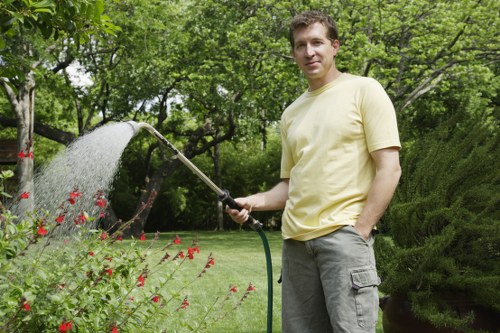
Pests and diseases can quickly damage your garden if not addressed promptly. Integrated Pest Management (IPM) is an effective strategy that combines biological, cultural, and chemical methods to control pests sustainably.
Regularly inspecting your plants for signs of pests or diseases allows for early intervention. Encourage beneficial insects like ladybugs and bees, which can help control pest populations naturally.
When necessary, use eco-friendly pesticides and fungicides to minimize the impact on beneficial organisms and the environment.
Implementing Integrated Pest Management (IPM)
IPM focuses on long-term prevention of pests through a combination of techniques such as habitat manipulation, biological control, and use of resistant varieties.
By understanding the life cycles of pests and the ecological relationships within your garden, you can make informed decisions that reduce reliance on chemical treatments.
Maintaining a diverse garden ecosystem can naturally keep pest populations in check, promoting a healthier and more resilient garden.
Steps to Effective IPM
- Monitor pest levels regularly.
- Use traps and barriers to control pest movement.
- Introduce natural predators to manage pest populations.
Pruning and Trimming Techniques
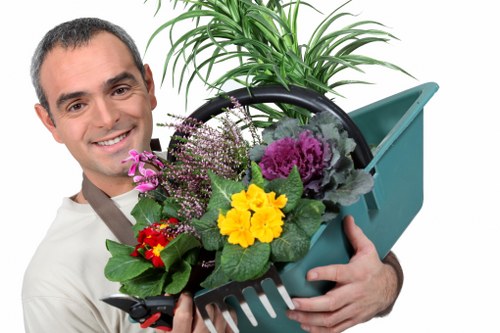
Proper pruning and trimming are essential for maintaining plant health and encouraging robust growth. Regularly removing dead or diseased branches prevents the spread of issues and improves the overall appearance of your garden.
Different plants require specific pruning techniques. For instance, flowering shrubs may need to be pruned after blooming, while fruit trees benefit from annual structural pruning to enhance fruit production.
Using the right tools and understanding the correct timing for pruning can significantly impact the vitality and aesthetics of your garden.
Seasonal Pruning Guidelines
Each season offers unique opportunities for pruning. In spring, focus on shaping plants and removing any winter damage. Summer pruning can help control growth and improve air circulation, reducing the risk of disease.
In autumn, clear away fallen leaves and prune perennials to prepare them for winter. Avoid heavy pruning during the fall to prevent stimulating new growth that may be damaged by cold weather.
Understanding the seasonal needs of your plants ensures they remain healthy and continue to thrive in Yeading's climate.
Essential Pruning Tools
- Bypass pruners for precise cuts.
- Pruning saws for larger branches.
- Gloves and protective eyewear for safety.
Fertilization and Soil Care
Fertilizing your garden provides essential nutrients that support plant growth and development. Yeading's soil may require amendments to enhance fertility and structure.
Organic fertilizers, such as compost and manure, improve soil health by adding organic matter and beneficial microorganisms. Inorganic fertilizers can provide specific nutrients, but should be used judiciously to prevent nutrient runoff and soil imbalance.
Regular soil testing can help you tailor your fertilization strategy to the specific needs of your garden, ensuring optimal plant performance and sustainability.
Choosing the Right Fertilizer
Selecting the appropriate fertilizer depends on the type of plants and their specific nutrient requirements. Leafy vegetables, for example, thrive with higher nitrogen levels, while root vegetables benefit from potassium-rich fertilizers.
Slow-release fertilizers offer a consistent nutrient supply over time, reducing the need for frequent applications and minimizing the risk of over-fertilization.
Incorporating cover crops and green manures can naturally enhance soil fertility, promoting a healthy and productive garden ecosystem.
Fertilization Schedule
- Spring: Apply organic compost to kickstart growth.
- Summer: Use balanced fertilizers to maintain plant health.
- Autumn: Add manure to prepare the soil for winter.
Lawn Care and Maintenance
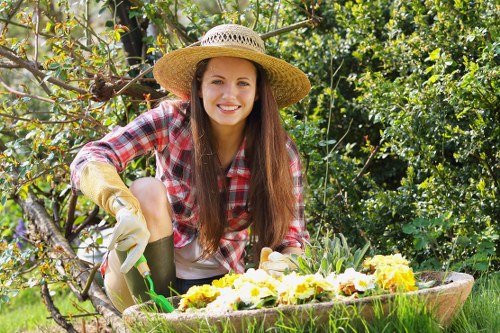
A well-maintained lawn enhances the overall appeal of your garden. Regular mowing, aeration, and dethatching are essential practices to keep your lawn healthy and vibrant.
Yeading's climate allows for a variety of grass types, each with specific care requirements. Choosing the right grass for your lawn ensures it can withstand local weather conditions and foot traffic.
Proper lawn care not only improves aesthetics but also contributes to the health of your entire garden by preventing weeds and promoting strong grass growth.
Effective Lawn Care Practices
Maintaining a lush lawn involves more than just mowing. Aerating the soil helps improve water and nutrient penetration, while dethatching removes dead grass and debris that can hinder growth.
Regular overseeding can fill in bare spots and enhance the density of your lawn, making it more resistant to pests and diseases.
Healthy lawn care practices create a strong foundation for your garden, contributing to a beautiful and resilient outdoor space.
Lawn Maintenance Tips
- Mow at the right height to promote grass health.
- Aerate your lawn annually to improve soil conditions.
- Apply topdressing to smooth out uneven areas.
Seasonal Garden Care

Each season brings unique challenges and opportunities for garden maintenance. Adapting your care routine to the changing weather ensures that your garden remains healthy and beautiful year-round.
Spring is the time for planting and preparing beds, summer focuses on growth and irrigation, autumn involves harvesting and preparing for winter, and winter requires protection and minimal maintenance.
Understanding the seasonal needs of your garden allows you to anticipate changes and respond effectively, maintaining a thriving garden in Yeading's dynamic climate.
Spring Garden Maintenance
Spring is a period of renewal, making it the perfect time to plant new flowers, vegetables, and shrubs. Preparing the soil by adding compost and fertilizers promotes healthy growth from the start.
Remove any winter debris and prune trees and shrubs to encourage new growth. Starting seedlings indoors can give your plants a head start, ensuring a productive growing season.
Implementing early-season maintenance sets the foundation for a successful and vibrant garden throughout the year.
Spring Maintenance Checklist
- Plant new flowers and vegetables.
- Prune trees and shrubs.
- Apply mulch to retain soil moisture.
Winterizing Your Garden

Winter poses unique challenges for garden maintenance. Protecting plants from frost and heavy snow is crucial to prevent damage and ensure their survival until spring.
Applying mulch around perennials and shrubs helps insulate the soil, maintaining a stable temperature and reducing freeze-thaw cycles that can harm plant roots.
Clearing debris and covering sensitive plants with protective materials further safeguards your garden during the colder months.
Protecting Plants in Winter
Use burlap, frost cloths, or other protective coverings to shield delicate plants from harsh weather conditions. Avoid using plastic, which can trap moisture and lead to fungal issues.
Consider moving potted plants to sheltered areas, such as garages or cold frames, to provide additional protection against freezing temperatures.
Regularly inspect your garden during winter for signs of damage and take corrective actions as needed to preserve plant health.
Winter Care Techniques
- Apply thick layers of mulch to protect ground plants.
- Cover plants with frost cloths during cold snaps.
- Remove snow gently to prevent breaking branches.
Enhancing Garden Aesthetics
Aesthetics play a significant role in the overall appeal of your garden. Incorporating elements such as pathways, lighting, and decorative features can transform your garden into a stunning outdoor retreat.
Pathways made from natural materials like stone or gravel guide visitors through your garden while adding visual interest. Outdoor lighting highlights key features and allows you to enjoy your garden during the evening hours.
Decorative elements, such as garden art, fountains, and seating areas, create focal points and enhance the functionality and beauty of your outdoor space.
Creating Inviting Pathways
Pathways not only provide practical access but also contribute to the garden's aesthetic appeal. Design paths that complement your garden's style, whether it's rustic, modern, or traditional.
Incorporate curves and varying widths to add visual interest and guide visitors through different sections of your garden.
Using natural materials like slate, gravel, or wood can create a harmonious blend with your garden's vegetation and structures.
Pathway Design Ideas
- Use stepping stones for a whimsical look.
- Create wide pathways for outdoor entertaining areas.
- Integrate lighting along pathways for safety and ambiance.
Hiring Professional Garden Maintenance Services
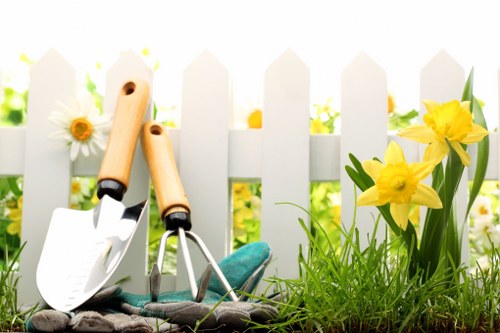
While DIY garden maintenance can be rewarding, hiring professional garden maintenance services in Yeading offers numerous benefits. Professionals bring expertise, efficiency, and specialized equipment to ensure your garden receives the best care possible.
Professional services can handle complex tasks such as landscape design, tree pruning, and soil analysis, providing tailored solutions that match your garden's unique needs.
Outsourcing maintenance allows you to enjoy a beautiful garden without the time and effort required for upkeep, freeing you to relax and appreciate your outdoor space.
Benefits of Professional Garden Maintenance
Professionals have the knowledge and experience to identify and address issues before they become significant problems. They stay updated with the latest gardening techniques and trends, ensuring your garden remains modern and healthy.
Using professional services can also save you time and physical effort, especially for larger gardens or those with challenging terrains.
Ultimately, investing in professional garden maintenance enhances the longevity and beauty of your garden, making it a worthwhile consideration for any Yeading homeowner.
Choosing the Right Service Provider
- Look for licensed and insured gardeners.
- Check reviews and ask for references.
- Ensure they offer services tailored to your specific garden needs.
Conclusion
Effective garden maintenance in Yeading involves a combination of understanding local conditions, regular upkeep, and strategic planning. By implementing the techniques and tips outlined in this guide, you can create and maintain a garden that is not only beautiful but also resilient and thriving.
Whether you choose to manage your garden independently or enlist the help of professional services, dedication and informed actions are key to achieving a flourishing outdoor space.
Start your journey to a stunning garden in Yeading today and experience the countless benefits of a well-maintained garden.
Ready to transform your garden? Contact us today and let our experts help you achieve the garden of your dreams!